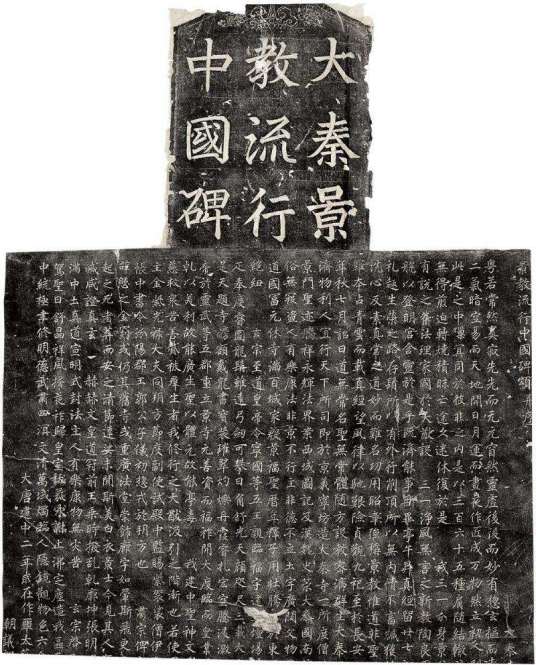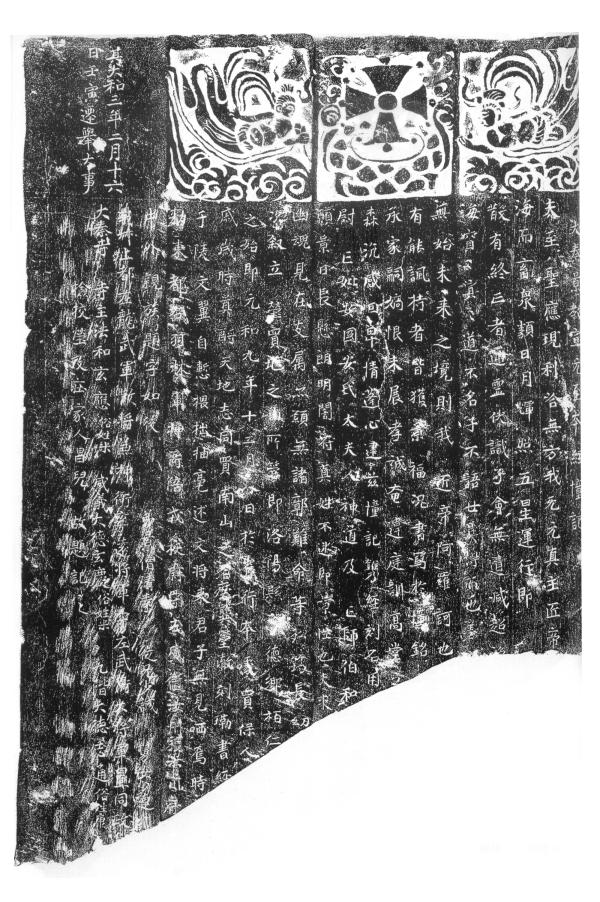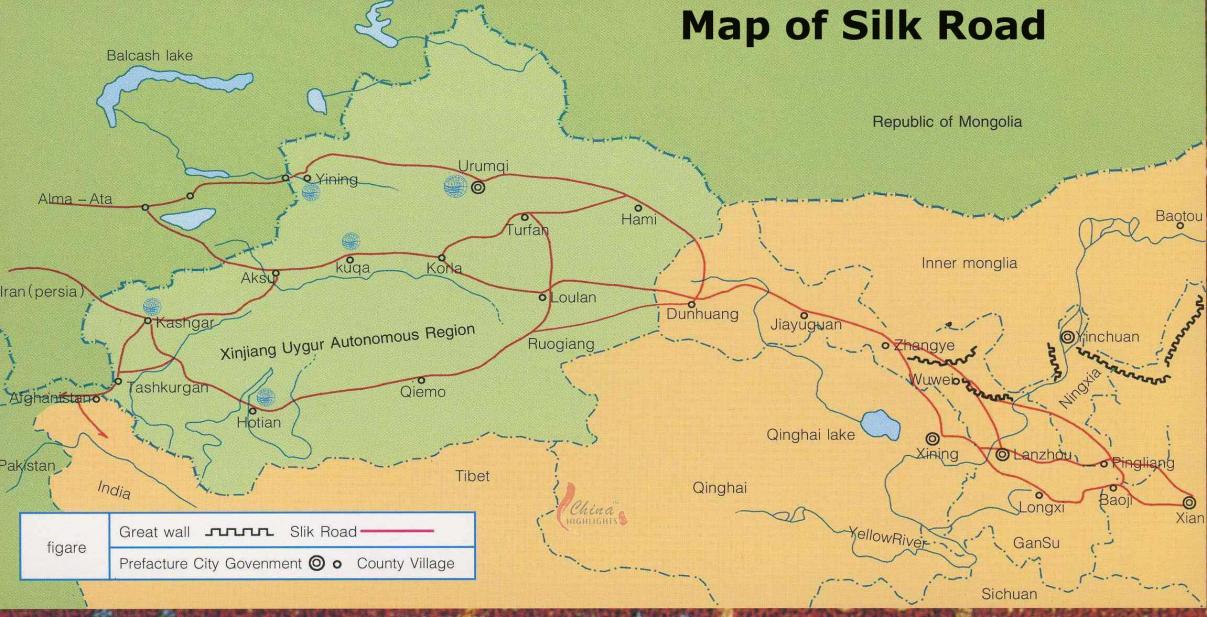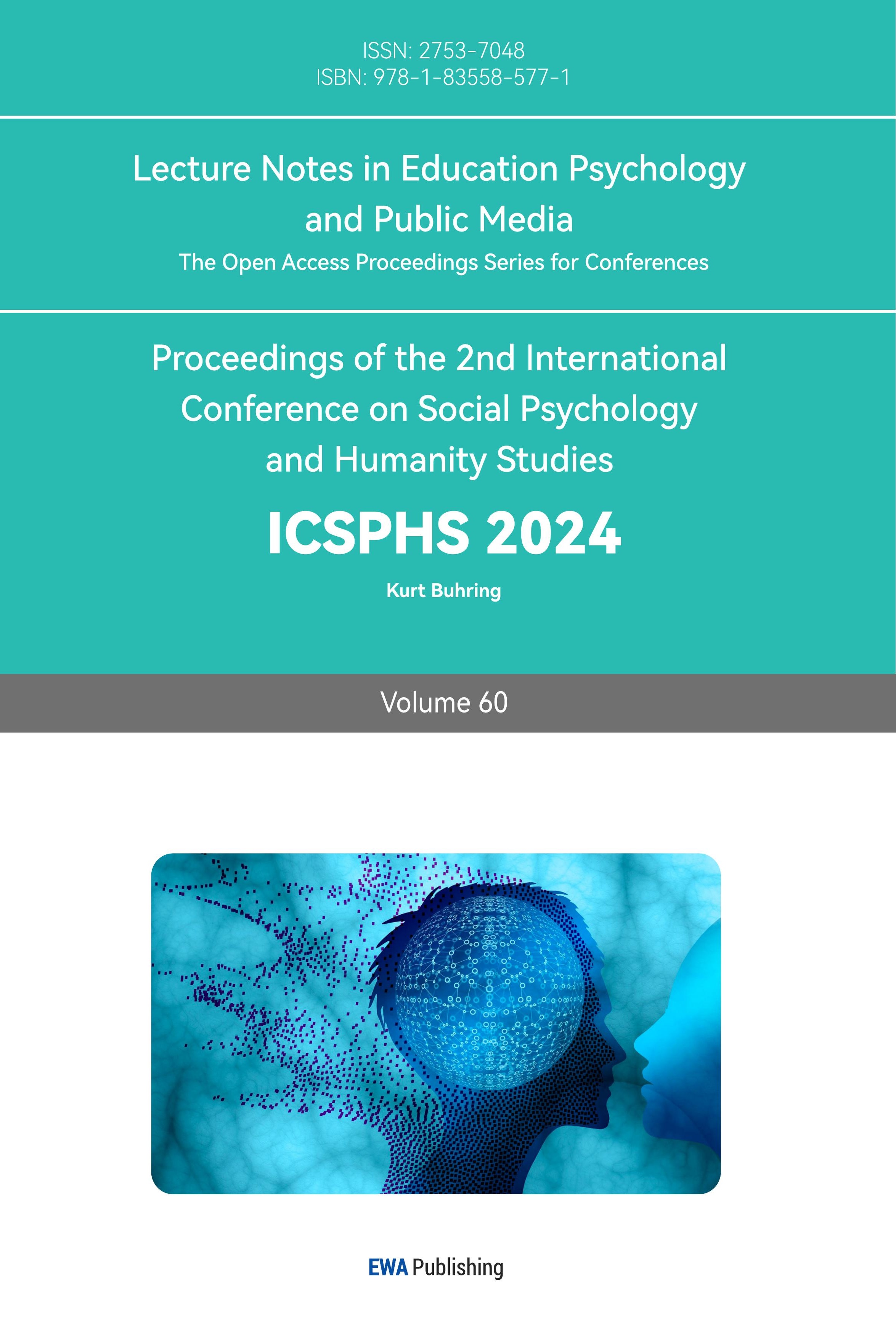1. Introduction
The purpose of this paper is to answer the question: In what extent does the establishment of the silk road affect the spread of East Syriac Christian between the 7th century to the 10th century., which is the Tang Dynasty.
I chose this research topic is because that the ancient silk road is a platform that not only spread goods such as spice and silk, but also spread mental concept such as trend of thoughts. So in this research I want to research the mental side of the silk road. I chose East Syriac Christian as an example is because there was a book that inspired my research, and this book mentioned East Syriac Christian. So I chose East Syriac Christian which is one of the Christian Denomination that silk road spreads as an example.
I want to find out whether the establish of the silk road is a factor of the spread of Christian as a result. The spread of Christian take the world over 700 years to establish. But I believe there are still a lot of factors which are still unrevealed. So I want to investigate that whether the Silk Road speed up this process or not.
In this paper, I used my source from Jstor, Academia and cnki.com. The primary sources I found all came from these websites.
Silk Road is an ancient trading network which connected China with the Mediterranean. And the establishment of the silk road can be traced to the Han Dynasty during the second century BC.[1]
East Syriac Christian is one of the world’s first Christian sect, it is founded by Nestorios, who is the patriach of Constantinple. From the East Syriac Christian theory, Jesus existed as two characters, the man and the divine or Son of God. However, in 431CE.The synod of Ephesus claimed East Syriac Christian as a cult and exiled Nestorios and his followers out of the Byzantium Empire. So Nestorios and his followers forced to spread its religion throughout the silk road [2]. So in this article I want to research in what extent does the silk road affect the spread of East Syriac Christian.
2. Research about the East Syriac Christian Monument:
There are evidence to show the existence of East Syriac Christian in Ancient China at the year 781. The East Syriac Christian Monument from Xi’an set up in 781 by Syriac Christians. From the East Syriac Christian Monument, we can prove the spread of Christian from Syria to China has been established. This Monument is a primary source, however, it still has some limitations.
The East Syriac Christian Monument can help us evaluate the time period of early East Syriac Christian missionaries, it can show the existence of East Syriac Christian in the Tang Dynasty. However, this source still has some limitations. the content is not written by historians and the content is written at that time. So the content of the text on the Monument are lack of accuracy of what exactly happened at that time.
The East Syriac Christian Monument was firstly set in the age 781, and it was written by a disciple, Jingjing Adam [3], as a symbol of cultural integration. This source revealed the existence of East Syriac Christian in the 8th Century. But most importantly, it is an artifact which reveal the spread of East Syriac Christian from Syria to China throughout the Silk Road.
This monument mentioned Aluben (Also be known as “Alopen” or “A-lo-pen”) He is a Persian Missionary who arrived at Changan at the year 635 CE. And Emperor Taizong (626-648) he was permitted to spread East Syriac Christian in the year 638.[3] So the existence of East Syriac Christian in China at the year 635 is proved.
From this piece of history source, we can confirm that East Syriac Christian was spread in Ancient China, and there are proof to show the existence of them, and it indeed arrived at Changan in the 7th century.

Figure 1: The East Syriac Christian Monument in Xi’an[4].
3. Research about East Syriac Christian Artifact in Dunhuang
Dunhuang is located at northwest of China, in Gansu Provence. It has one of the worlds’ largest artistic creation store and literature [5] And here also lies a lot of East Syriac Christian Artifacts and literature copies. These copies are important resources for us to research about the Spread of East Syriac Christian along the silk road, because Dunhuang is an important trading site along the silk road.
There were several East Syriac Christian Literature Copies that were found in the early 1900s.A particular case is “Daqin East Syriac Christian Xuanyuan Benjing”. It was estimated to be written between the 9th and 10th century, This literature copy was originally collected by Li Shengduo, later it was sold to Japanese Entrepreneur Nishio Shinpei. Researchers assume this literature copies were originally a copies that was directly written in Chinese by East Syriac Christian missionaries in order to spread East Syriac Christian in this region. And this source is written by the same man who also wrote the Daqin East Syriac Christian Monument, who is Jinjing. By comparing the writing of these two works, researchers confirmed that these two works are all wrote by the same men, hence they confirmed that this source is written between the 9th and 10th century. This can prove the existence of East Syriac Christian in this region between the 9th and 10th centuries [6], furthermore, this can prove that the East Syriac Christian has deeply integrate the society. This proved that the East Syriac Christian once played a huge rule in Dunhuang.
From source two we can find out that the copies in Dunhuang can prove the exist of East Syriac Christians in Dunhuang. This source directly come from Dunhuang and it is written at that time. However, due to the length of time of this source, and the fact that there are two East Syriac Christian Literature copies that can’t be identified as true. So whether this copie is true can’t be totally confirmed. However, this source still can be confirmed. The purpose of these Literature copies are to spread East Syriac Christian to Chinese Citizen. The content of the copies are all about East Syriac Christian. However, this source also have a lot of limitations. There is no information about the Journey of the East Syriac Christian of travelling the silk road or any related information. But this source still can be a proof that can show the existence of East Syriac Christian in Dunhuang, which is a very important silk road site.

Figure 2: Picture of Daqin East Syriac Christian Xuanyuan Benjing [7].
4. Research about the East Syriac Christian in Central Asia
Central Asia is also an important location for us to research the East Syriac Christian, from past to present, it is one of the worlds’ most important East Syriac Christian site. In the article: East Syriac Christian CHRISTIANITY IN CENTRAL ASIA. The author mentioned this over and over. In this article, he mentioned Central Asia as a very important East Syriac Christian settlement. Even during Islamic rule, they can still live their and continue to run their medical school. However, because of the Muslim restrictions on Christian evangelization in the Arab Caliphate, East Syriac Christians must went spread their religion toward the east, and this leads to the East Syriac Christian to oversaw a larger part of Area during the time of Timothy I (779-820). Nineteen metropolitans and 85 bishops represented the church in these places. East Syriac Christian grown to its strongest point in this area. This represent that the East Syriac Christian has gain a lot of power at that time, which means a large part of the silk road is controlled by Nastorians. [8]
This source also gave me an important information-a lot of East Syriac Christians are sogdians. The sogdians play an important role in the spread of East Syriac Christian because they can work and settle independently without the requirement for monastery.[8]
This source is a secondary source, which means that this source could be untrue or not accurate enough in a certain point of view, however, this is written by professional historian which means that this source is highly logical and professional. It can be a useful source to research the East Syriac Christian in Central Asia.
5. Conclusion

Figure 3: A silk road map [9].
In my research, there are three important sites, as Figure 3 shows and they are Central Asia, Dunhuang, and Chang’an. We can find a pattern of these three places-they are all a part of the silk road. Furthermore, their location is connected with trading route. So these locations are not isolated, they are connected. From that we can get a solution-since the Nestorio is exiled from the Byzantium Empire, he and his follower are travelling east throughout the silk road. And established several important East Syriac Christian site in Dunhuang and Changan. And the strong East Syriac Christian Foundation in Central Asia also increased this situation. So we can get the conclusion that the Silk Road plays an important role in the spread of East Syriac Christian.
References
[1]. SPENGLER, ROBERT N. Fruit from the Sands: The Silk Road Origins of the Foods We Eat. 1st ed., University of California Press, 2019. JSTOR, https://doi.org/10.2307/j.ctvh1dx4s. Accessed 16 Aug. 2023.
[2]. Obrusánszky.Borbála .East Syriac Christian CHRISTIANS IN FRONTIER HISTORY.(a) Karoli Gaspar University, Budapest, Hungary. 2019. No 3 | e-ISSN: 2500-0225.https://doi.org/10.24411/2500-0225-2019-10024
[3]. BARAT, KAHAR. “ALUOBEN, A East Syriac Christian MISSIONARY IN 7 TH CENTURY CHINA.” Journal of Asian History, vol. 36, no. 2, 2002, pp. 184. JSTOR, http://www.jstor.org/stable/41933297. Accessed 17 Aug. 2023.
[4]. selected from https://alchetron.com/East Syriac Christian-Stele
[5]. Pekarik, Andrew J., and Stephanie Stokes. “The Cave Temples of Dunhuang.” Archaeology, vol. 36, no. 1, 1983, pp. JSTOR, http://www.jstor.org/stable/41729036. Accessed 19 Aug. 2023.
[6]. East Syriac Christian Relics Newly Discovered at Dunhuang—Also on the East Syriac Christian Documents and Banners Unearthed from the Library Cave.pp.20.Peng Jinzhang (Dunhuang Academy, Dunhuang, Gansu 736200)
[7]. From https://www.dahebao.cn/dahe/appweb/1406114
[8]. Dickens.Mike.East Syriac Christian CHRISTIANITY IN CENTRAL ASIA .2001.pp6
[9]. From https://www.chinahighlights.com/silkroad/map.htm
Cite this article
Shao,Y. (2024). In What Extend Does the Establishment of the Silk Road Affect the Spread of East Syriac Christian Between the 7th and the 10th Century. Lecture Notes in Education Psychology and Public Media,60,72-76.
Data availability
The datasets used and/or analyzed during the current study will be available from the authors upon reasonable request.
Disclaimer/Publisher's Note
The statements, opinions and data contained in all publications are solely those of the individual author(s) and contributor(s) and not of EWA Publishing and/or the editor(s). EWA Publishing and/or the editor(s) disclaim responsibility for any injury to people or property resulting from any ideas, methods, instructions or products referred to in the content.
About volume
Volume title: Proceedings of the 2nd International Conference on Social Psychology and Humanity Studies
© 2024 by the author(s). Licensee EWA Publishing, Oxford, UK. This article is an open access article distributed under the terms and
conditions of the Creative Commons Attribution (CC BY) license. Authors who
publish this series agree to the following terms:
1. Authors retain copyright and grant the series right of first publication with the work simultaneously licensed under a Creative Commons
Attribution License that allows others to share the work with an acknowledgment of the work's authorship and initial publication in this
series.
2. Authors are able to enter into separate, additional contractual arrangements for the non-exclusive distribution of the series's published
version of the work (e.g., post it to an institutional repository or publish it in a book), with an acknowledgment of its initial
publication in this series.
3. Authors are permitted and encouraged to post their work online (e.g., in institutional repositories or on their website) prior to and
during the submission process, as it can lead to productive exchanges, as well as earlier and greater citation of published work (See
Open access policy for details).
References
[1]. SPENGLER, ROBERT N. Fruit from the Sands: The Silk Road Origins of the Foods We Eat. 1st ed., University of California Press, 2019. JSTOR, https://doi.org/10.2307/j.ctvh1dx4s. Accessed 16 Aug. 2023.
[2]. Obrusánszky.Borbála .East Syriac Christian CHRISTIANS IN FRONTIER HISTORY.(a) Karoli Gaspar University, Budapest, Hungary. 2019. No 3 | e-ISSN: 2500-0225.https://doi.org/10.24411/2500-0225-2019-10024
[3]. BARAT, KAHAR. “ALUOBEN, A East Syriac Christian MISSIONARY IN 7 TH CENTURY CHINA.” Journal of Asian History, vol. 36, no. 2, 2002, pp. 184. JSTOR, http://www.jstor.org/stable/41933297. Accessed 17 Aug. 2023.
[4]. selected from https://alchetron.com/East Syriac Christian-Stele
[5]. Pekarik, Andrew J., and Stephanie Stokes. “The Cave Temples of Dunhuang.” Archaeology, vol. 36, no. 1, 1983, pp. JSTOR, http://www.jstor.org/stable/41729036. Accessed 19 Aug. 2023.
[6]. East Syriac Christian Relics Newly Discovered at Dunhuang—Also on the East Syriac Christian Documents and Banners Unearthed from the Library Cave.pp.20.Peng Jinzhang (Dunhuang Academy, Dunhuang, Gansu 736200)
[7]. From https://www.dahebao.cn/dahe/appweb/1406114
[8]. Dickens.Mike.East Syriac Christian CHRISTIANITY IN CENTRAL ASIA .2001.pp6
[9]. From https://www.chinahighlights.com/silkroad/map.htm









